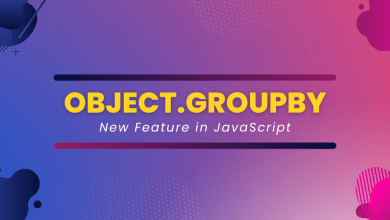Top 5 Best Frontend Frameworks for web Development

If you are looking for the best frontend frameworks for your career then you are in the right place. we will give you detailed information with an example.
From the below list, you can choose any framework for your upcoming projects for improving user experience.
Right!! for user experience.
User experience is the first priority of any frontend developer who wants to gain good results.
User experience must be seamless when they come to visit your designed website.
If you are new in this field, you should not pick any framework for your projects because it will become a bearer in your learning process and career.
Search on google and see any top website, and you will find out that user experience is the first priority of all of them.
I have seen thousand of clients who are stuck in selecting the framework that will be the quick solution for their application.
What is Frontend Framework?
A framework is a product that simplifies the maintenance of complex projects. The framework contains basic program modules (ready-to-use pieces of code) that help developers solve common programming tasks.
The framework also contains utility programs, libraries, and some scripts that make developer life easier.
Frontend in web development is the graphical user interface of a website.
in other works, it is the part that users can see or interact with it. The front should be user-friendly and help user easily understand.
Best 10 Frontend Frameworks
Vue.js
vue.js is released in 2014. It is too popular these days because of its features. It is proving great web interfaces.
It is a versatile JavaScript framework. It provides a great interface when we need small and fast components in an easy way as compared to angular and react.
It was fully rewritten in TypeScript. It provides benefits in agile development.
Benefits of Vue.js:
- Clear and Simple
- Easy to Learn
- Support for Typescript
- High performance
- Virtual DOM
Limitations of Vue.js:
- Lack of Stability in Components
- smaller community
- A language barrier in integrating various plugins
React
React.js is a JavaScript library for building user interfaces that run on the browser and on the server.
React is a library for building user interfaces, which means that it’s not a framework. It doesn’t include any routing or state management, but you can use other libraries to bring these features into your React apps if you need them.
The Facebook newsfeed is built with React. It uses React to render different components on the client side and then it uses GraphQL to fetch data from the server side in order to show users what they want to see in real-time.
React was created by Facebook in 2011 and has since been open-sourced. It is a JavaScript library for building user interfaces which makes it easier to create interactive UIs that can be rendered on both the server and client side.
Benefits of React:
- Easy to learn
- Usability
- The code is readable, which makes it easier to debug
- React dev tools are advanced and super useful
- It can be used with other libraries such as Redux, Flux, Relay, and RactiveJS
-
It’s fast
Limitations of React:
- Due to multiple and constant updates in the framework, it is difficult to make the proper documentation and so it impacts the learning curve for beginners
- It only gives frontend solutions
- JSX complexity
Angular
Angular is a popular JavaScript framework that has been used by companies like Google and Netflix. It is also the front-end development framework of choice for many enterprises and startups. It is developed by Google in 2010.
Benefits of Angular:
- It is more flexible
- easy to learn
- and more robust than other frameworks.
- high performance
- real-time synchronization
Limitations of Angular:
- it can be difficult to find information about how to do certain things,
- it requires a lot of boilerplate code
- , and there can be performance issues with large applications or complex routing setups.
- Hard to learn
- Heavy
Backbone.js
Backbone.js is a JavaScript library that provides a model-view-controller (MVC) architecture for web applications. It is one of the most popular front-end frameworks for developing single-page applications.
It has been developed by Jeremy Ashkenas, who also created CoffeeScript, Underscore.js, and DocumentCloud. It was originally released in 2010 as an open-source project on GitHub and it has been widely used by developers from all over the world ever since.
Benefits of Backbone:
- Free and open-source
- Easy to learn
- Fast and lightweight
- Allows users to create well-structured applications
Limitations of Backbone:
- difficult to debug
- its API may not be as intuitive as other frameworks such as Angular or React.
- Heavy files generated by Bootstrap can slow down the processing and deplete the battery, requiring manual deletion
Svelte
A Svelte is a type of dress that is tight at the top and flares out at the bottom.
A svelte dress is typically fitted from the waist to the knee, then flares out in a skirt that is often pleated or gathered. The flare can be asymmetrical, with one side of the skirt being shorter than the other.
Benefits of Svelte:
- Better reactivity
- Faster than any other framework like Angular or React
- Latest of all
- Scalable framework
- Lightweight, simple, and uses the existing javascript libraries
Limitations of Svelte:
- Small community
- Lack of support
- Lack of tooling
- It is not popular yet







Good post. I learn something totally new and challenging on blogs I stumbleupon every day. It will always be interesting to read through articles from other writers and use a little something from other sites.